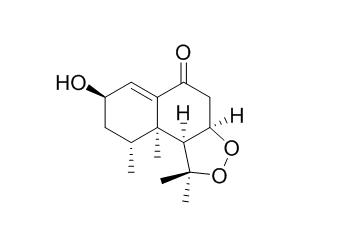Kanshone B
Kanshone B shows inhibitory activity against LPS-induced NO production with the IC(50) value of 4.6-21.6 uM.
Inquire / Order:
manager@chemfaces.com
Technical Inquiries:
service@chemfaces.com
Tel:
+86-27-84237783
Fax:
+86-27-84254680
Address:
1 Building, No. 83, CheCheng Rd., Wuhan Economic and Technological Development Zone, Wuhan, Hubei 430056, PRC
Providing storage is as stated on the product vial and the vial is kept tightly sealed, the product can be stored for up to
24 months(2-8C).
Wherever possible, you should prepare and use solutions on the same day. However, if you need to make up stock solutions in advance, we recommend that you store the solution as aliquots in tightly sealed vials at -20C. Generally, these will be useable for up to two weeks. Before use, and prior to opening the vial we recommend that you allow your product to equilibrate to room temperature for at least 1 hour.
Need more advice on solubility, usage and handling? Please email to: service@chemfaces.com
The packaging of the product may have turned upside down during transportation, resulting in the natural compounds adhering to the neck or cap of the vial. take the vial out of its packaging and gently shake to let the compounds fall to the bottom of the vial. for liquid products, centrifuge at 200-500 RPM to gather the liquid at the bottom of the vial. try to avoid loss or contamination during handling.
Korea Institute of Oriental Medicine2020, doi: 10.21203.
Molecules.2023, 28(3):958.
Natural Product Communications2020, doi: 10.1177.
J Cell Mol Med.2023, 27(10):1423-1435.
Food Res Int.2017, 96:40-45
Heliyon.2022, e12337.
Int J Biol Macromol.2019, 126:653-661
Saf Health Work.2019, 10(2):196-204
Antioxidants (Basel).2020, 9(4):326.
J Inflamm Res.2022, 15:5347-5359.
Related and Featured Products
Bioorg Med Chem Lett. 2012 Jan 1;22(1):706-8.
Inhibitory constituents of Nardostachys chinensis on nitric oxide production in RAW 264.7 macrophages.[Pubmed:
22079762]
METHODS AND RESULTS:
The activity-guided fractionation of the MeOH extract of the rhizomes and roots of Nardostachys chinensis led to the isolation of two new sesquiterpenoids, narchinol B (8) and narchinol C (9), along with 10 known compounds, ursolic acid (1), nardosinone (2), pinoresinol (3), desoxo-narchinol A (4), Kanshone B (5), epoxyconiferyl alcohol (6), debilon (7), 4α,5-dimethyl-1,3-dioxo-1,2,3,4,4α,5,6,7-octahydronaphthalene (10), p-coumaric acid (11), and isoferulic acid (12). Their structures were determined using spectroscopic techniques, which included 1D- and 2D-NMR.
CONCLUSIONS:
Among the isolates, compounds 2, 4, 5, 8 and 9 showed inhibitory activity against LPS-induced NO production with IC(50) values of 4.6-21.6 μM.



